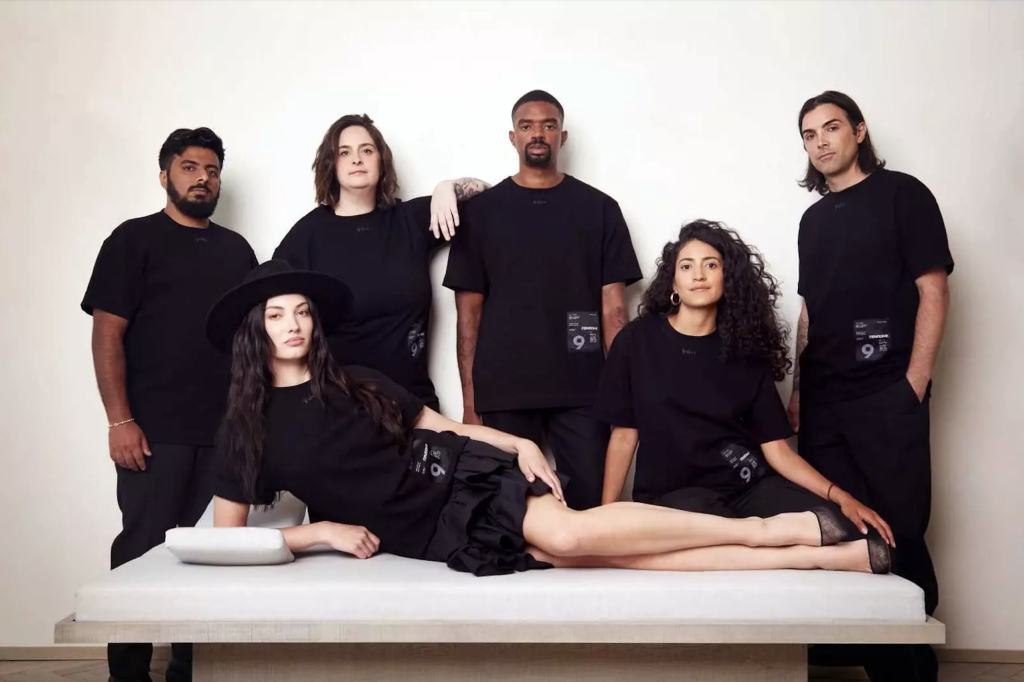If 2022 was the year Web3 found its footing, then 2023 is shaping up to be when the landscape officially gains ground. The past 12 months saw big names and big projects including Nike x RTFKT and Tiffany’s Cryptopunks take the helm across the virtual space. Today, new trend cycles are already emerging — showing us what we can expect to see across a potentially explosive year for luxury and the metaverse. Jing Daily rounds up the key themes and predictions to keep on your radar for 2023.
Bridging the gap between physical and digital is key for mainstream adoption#
A direction set to continue is the blurring of virtual and reality. Last year saw many utilize the metaverse as a way of bridging the gap between physical and digital limitations - with phygital collections and cross-dimensional experiences proving a popular avenue.
“For 2023, we expect more exploration of blurring the lines between physical and digital, as well as more efforts to bridge the gap between the mainstream and Web3 communities,” Zagabond, founder of the NFT project Azuki, explains. He believes that brand mascots will become key players in furthering this exploration.
Like virtual idols, these Web3-native spokespeople have the ability to crack mainstream appeal through brand partnerships and ambassador roles, paving the way for new opportunities that go beyond traditional influencer marketing. “These mascots are key for storytelling, which is also a major trend that we'll see in 2023 and beyond,” he says. “Web3 technology enables brands to tell better stories; the sooner brands figure this out, the stronger their communities will be.”

Phygital products need a rebrand — and a more sustainability-focused strategy#
2022 was the year phygital took over the fashion landscape, thanks to drops from Prada, Givenchy, and Tommy Hilfiger. But unlocking real-world value was a hard task. This year, moving away from merch and instead honing down on achieving luxury-standard quality is what will take brands to new heights in their digital roadmaps.
Luxury fashion consumers are showing more interest in the digital space than ever before. Though many remain hesitant to invest. To tackle this, brands are faced with finding the golden ratio between creating goods that bring online identities into the physical realm while maintaining their renowned standard of quality.
Prolific NFT collector-turned-designer gmoney is using his platform, 9dcc, to battle this challenge head on by working to redefine the virtual space. The designer is replacing undesirable jargon such as “phygital” with sleeker terms like “networked products,” as well as prioritizing high quality garments over one-off gimmicks — impactful changes that are likely to bode well with luxury’s audience and encourage them to put money into the online market.
"As Gen Z and Gen Y are set to make up nearly half of the luxury fashion market in just a few years' time, luxury brands are looking to create memorable experiences that not only acquire new audiences but retain them long-term," Charles Hambro, Co-Founder & CEO of Web3 data platform GEEIQ outlines. "A phygital dimension to a luxury offering creates a bridge between online and offline environments, that makes it more accessible for new buyers while simultaneously future-proofing the brand."
Sustainability efforts will also be at the core of this conversation. The rise in phygital trends runs the risk of feeding into overconsumption, so how brands will address this through their own commitments will be interesting to see. Labels such as Cult & Rain have already demonstrated how Web3-native companies can implement sustainable practices. The brand's zero inventory, made-to-order strategy alleviates the risk of surplus stock and avoids wholesale waste.
"In a world where technology has made mass production and fast fashion the norm, luxury Web3 made-to-order stands out as a beacon of quality and individuality," Andy Griffiths, CMO of Cult & Rain says. "Focusing on delivering a high quality and sustainable physical item with digital counterparts sets us apart, and will continue to drive our importance in an ever-changing Web3 world. “

Improved infrastructure will encourage seamless product authenticity and resale programs in Web3#
As part of this trend, more brands are looking to turn their attention to implementing technology which proves authenticity and decreases counterfeiting opportunities. In its most recent drop, Japanese streetwear brand Ambush integrated Physically Backed Token (PBT) “bean” chips into its assets, which powered exclusive blockchain ownership verification technology.
"As we continue to move past the metaverse hype, it can no longer be all gimmick. Phygital offerings need to be part of a reasoned, long-term strategy that offer genuine value for the buyer, rather than just a branding opportunity. Improved infrastructure, verifiable products and better authentication will likely increase the adoption curve of these products by introducing new consumers to Web3 and metaverse concepts," Hambro continues.
The metaverse’s evolution brings higher demands for an infrastructure that can also demonstrate one's status in Web3. Not only will the evolution of blockchain technology allow consumers to easily verify their assets, but it also opens up new opportunities for resale models and secondary value.
The improved blockchain technology can help luxury resellers get their Web3 ambitions up off the ground. Much like in the offline world, provenance and rarity are attractive selling points for luxury consumers in Web3. This is something that companies such as digital-native vintage label MNTGE have already recognized.
The brand, which has yet to officially launch, is already making waves across the industry after announcing that it will be bringing one-off archival pieces to the metaverse through digital twins. Not only is it tapping new tech possibilities, but it is innovating a market that demonstrates promising credentials. In 2021, the vintage fashion market was valued at more than $96 billion in 2021, a number that is estimated to more than double by 2026.
Digital fashion marketplaces are luxury’s way in to a more accessible future#
Immersive virtual shopping experiences took off in 2022, allowing consumers to try on outfits and unlock products through gamified activities and incentivization, as well as leverage brand storytelling. This year will see this trend continue, elevating the traditional e-commerce model to something more exciting, engaging and interactive.
Digital fashion marketplaces are also on 2023’s agenda. Last year saw the likes of DressX and Meta’s Avatars Store make headlines, but this year could be when they crack mainstream appeal. In Roblox’s “2022 Metaverse Fashion Trend Report” from November, nearly three in four respondents said they will spend money on digital fashion, with over one in four already having spent from $20 to over $100 on a single virtual item.
As the metaverse becomes more interoperable, consumers are able to show off their virtual purchases (on avatars and themselves) across various platforms such as Instagram, Decentraland, Sandbox and Roblox. Digital fashion marketplaces will satiate the appetite for luxury’s online counterparts, thanks to their more affordable and accessible price points.

